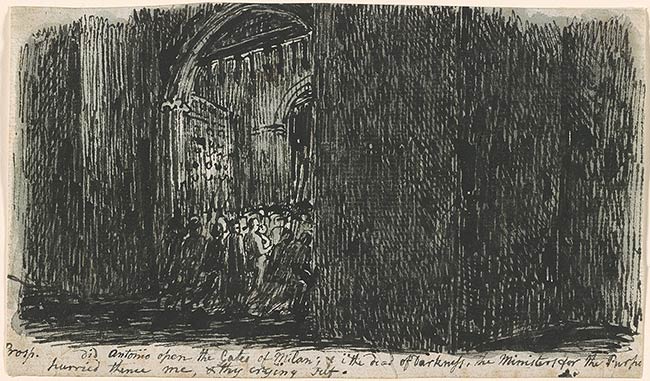
Watermark: three fleur de lis surmounted on a crown, top center of verso.
While John Flaxman was predominantly known as a Neo-Classical sculptor of the late eighteenth century, he was also a prolific draftsman of Greek and Roman subjects, as well as a book illustrator, treating canonical texts from history and literature. This drawing in pen and black ink is an illustration of Act I, Scene II of William Shakespeare's The Tempest of 1610-1611. The sheet is covered to all four corners with a heavy, almost violent application of black ink, which underscores the unsettling passage in the narrative.
An inscription at the lower margin of the sheet indicates that this is the moment when Prospero damns his brother Antonio: "The King of Naples, being an enemy/ To me inveterate, hearkens my brother's suit;/ Which was, that he, in lieu o' the premises/ Of homage and I know not how much tribute,/ Should presently extirpate me and mine/ Out of the dukedom and confer fair Milan/ With all the honours on my brother: whereon,/ A treacherous army levied, one midnight/ Fated to the purpose did Antonio open/ The gates of Milan, and, i' the dead of darkness,/ The ministers for the purpose hurried thence/ Me and thy crying self." While many of his drawings were made with predominant outlines and little shadow, as if to replicate the forms in antique vase paintings, his later works were more closely aligned wih the romantic movement, similar in style to an artist such as Henry Fuseli (1741-1825).
Inscribed along bottom edge in pen and black ink, "Prosp. did Antonio open the Gates of Milan; and, i' th' dead of darkness, The ministers for th' purpose hurried thence me, & thy crying self".
McCrindle, Joseph F., former owner.
